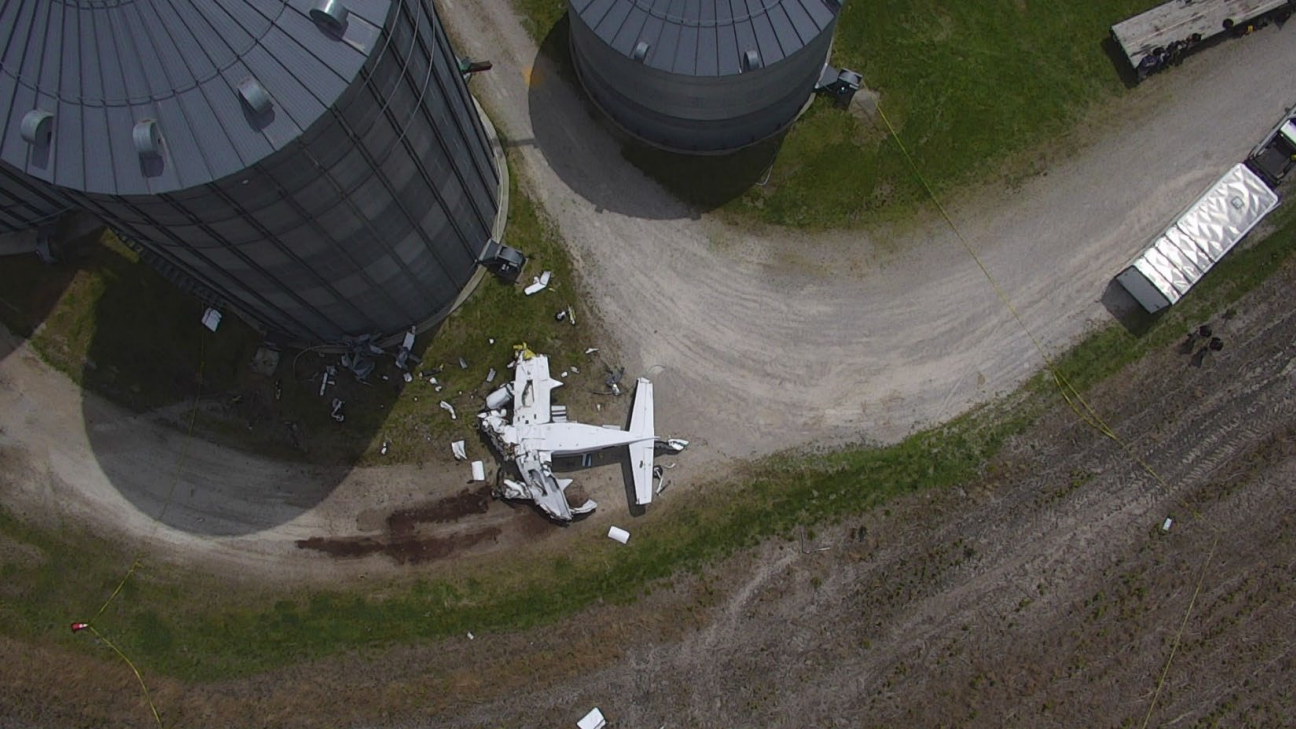
ASN Wikibase Occurrence # 226034
This information is added by users of ASN. Neither ASN nor the Flight Safety Foundation are responsible for the completeness or correctness of this information.
If you feel this information is incomplete or incorrect, you can submit corrected information.
| Date: | Monday 10 June 2019 |
| Time: | 10:20 |
| Type: |  Cessna 425 Conquest I |
| Owner/operator: | Santa Fe Investments Inc |
| Registration: | N622MM |
| MSN: | 425-0187 |
| Year of manufacture: | 1984 |
| Total airframe hrs: | 6092 hours |
| Engine model: | Pratt & Whitney PT6A-112 |
| Fatalities: | Fatalities: 1 / Occupants: 1 |
| Aircraft damage: | Destroyed |
| Category: | Accident |
| Location: | near Butler Memorial Airport (BUM/KBUM), Butler, MO -
 United States of America United States of America
|
| Phase: | Approach |
| Nature: | Private |
| Departure airport: | Vero Beach Regional Airport, FL (VRB/KVRB) |
| Olathe-New Century AirCenter, KS (JCI/KIXD) | |
| Investigating agency: | NTSB |
| Confidence Rating: |
During a cross-country flight, the pilot initiated a descent to his intended destination. During the descent, the pilot informed air traffic control (ATC) that he could not retard power on the right engine. Later in the descent, the pilot decided to shut down the right engine. The pilot communicated his desire to land at the nearest airport to ATC, and ATC provided the pilot with the clearance to divert. Radar data showed the airplane in a steady descent toward the airport.
When the airplane was at an altitude of about 2,500 ft mean sea level, the pilot contacted ATC and stated that he was trying to get the airplane under control; radar data showed the airplane in a 360° right turn at the time. The pilot contacted ATC again and stated that he was going to land on a highway. No further transmissions were received from the pilot. After the right turn, the airplane continued in a descent through 1,300 ft mean sea level, at which point radar contact was lost. A witness saw the airplane and stated that the airplane was low and slow but appeared to be in stable flight with both propellers spinning. She did not see any smoke coming from the airplane. She saw the airplane flying northeast to southwest when it suddenly descended nose first into the ground. The airplane impacted a gravel road adjacent to a 100-ft-tall grain silo about 1 mile from the highway and about 3.3 miles from the airport.
Examination of the airframe flight controls, throttle quadrant rigging, and engines revealed no mechanical anomalies. The left and right engine fuel control units (FCU) were disassembled and showed no pre-existing mechanical anomalies that could have prevented normal operation. Some contaminants were found in the Py air sections of both FCUs. According to the manufacturer, if an FCU’s Py bleed was partially restricted with debris, modulation of power could be altered. However, each FCU’s Py bleed had no restrictions or blockages. Examination of the fuel pumps, propeller governors, and overspeed governors of both engines revealed no mechanical anomalies that could have prevented normal operation.
According to the Cessna 425 single-engine performance chart, the airplane could have maintained level flight with one engine inoperative if the landing gear and flaps were retracted and the inoperative engine’s propeller was feathered. At the time of impact, the airplane’s landing gear was extended, the flaps were at 10° down, and the right engine propeller condition lever was about 0.25 inch from minimum and not in the feather detent position.
The reason for the pilot’s reported problem with retarding the right engine’s throttle could not be determined. It is unknown why the pilot made a right turn into the inoperative engine toward the end of the descent, and the reason for the pilot’s loss of control could not be determined.
Probable Cause: The pilot’s loss of airplane control during a descent to a diversion airport with only the left engine operating. Contributing to the accident was a malfunction of the right engine throttle, the cause of which could not be determined.
Accident investigation:
 |
|
Sources:
https://www.kshb.com/news/local-news/pilot-killed-in-bates-county-plane-crash
https://www.kansascity.com/news/state/missouri/article231398238.html
https://fox4kc.com/2019/06/10/emergency-crews-on-scene-after-plane-crashes-into-grain-bin-in-bates-county/
https://www.kmzu.com/breaking-news-plane-crash-confirmed-in-bates-county/
https://www.kansascity.com/news/state/missouri/article231389718.html
NTSB
https://registry.faa.gov/aircraftinquiry/NNum_Results.aspx?NNumbertxt=622MM
https://uk.flightaware.com/live/flight/N622MM
Location
Images:


Photo: NTSB
Revision history:
| Date/time | Contributor | Updates |
|---|---|---|
| 10-Jun-2019 18:49 | Captain Adam | Added |
| 10-Jun-2019 19:08 | harro | Updated [Aircraft type, Cn, Operator, Departure airport, Destination airport, Source] |
| 10-Jun-2019 19:14 | harro | Updated [Photo] |
| 10-Jun-2019 19:44 | RobertMB | Updated [Time, Aircraft type, Operator, Location, Nature, Source, Damage, Narrative] |
| 10-Jun-2019 19:45 | RobertMB | Updated [Aircraft type] |
| 10-Jun-2019 21:48 | Captain Adam | Updated [Location, Source, Narrative] |
| 11-Jun-2019 09:44 | Iceman 29 | Updated [Embed code] |
| 11-Jun-2019 09:46 | Iceman 29 | Updated [Time, Source, Embed code] |
| 11-Jun-2019 10:20 | Iceman 29 | Updated [Embed code, Narrative] |
| 12-Jun-2019 06:12 | Anon. | Updated [Location] |
| 11-Apr-2022 23:37 | Captain Adam | Updated [Time, Location, Departure airport, Source, Embed code, Narrative, Category, Accident report, Photo] |
Corrections or additions? ... Edit this accident description
The Aviation Safety Network is an exclusive service provided by:


 ©2024 Flight Safety Foundation
©2024 Flight Safety Foundation